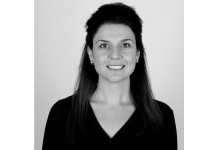Advent of an Economic Super-Cycle

- Joanne Marlowe, Founder and Chief Executive Officer at UFT
- 14.10.2016 08:00 am undisclosed
I am an optimist. You don’t have to look too far for proof of that. I opened the doors to UFT Commercial Finance in June of 2008 and found myself just a few short months later looking down the throat of a market monster that promised to swallow our new little business up whole. No ceremony. No remorse. Just the simple laws of economic selection; the young and the small are the first to fall. In a market environment that was successfully taking down the oldest, the biggest, and what were supposed to be the strongest, most people would have said we didn’t stand a chance – and they probably would have been right.
But, not with me. I have weathered storms before – some of the worst you could imagine, and I lived to fight another day. How much worse could this one be? Maybe we were in for 18-24 months of rough road – we could make our way through that. After all, we were young, so we were able to adapt quickly. We were small, so we were far more agile than those big boys and could make our way to cover if things got really bad. That may have been enough to keep us alive and our gates defended, but why survive if we had nowhere to go? The market meltdown decimated our original business model. Then, in pondering the frailties of securitized product structures as I found myself doing while sifting through the rubble, I got an idea that might solve the problem and provide a way forward. I decided that our new business model would be to fix the credit markets once and for all. What had just happened to destabilize the world economy right down to the depletion of individual retirement accounts could never be permitted to happen again. Crazy, you might say? Who were we to think that we could do that? That could take years and boatloads of money.
Well, 7 years later and over 12,000 pages of literature behind us, we have 26 credit products spanning the yield curve that comprise a new credit asset class – the Master Credit Participation Certificate or “CPC™”. Our “little engine that could” is standing at the precipice of introducing a product that can be positioned in support of lenders and investors across the globe and potentially change the face of the credit markets over the course of the next 24 months. And, without the hindrance of navigating through embedded legacy technology systems, it can scale in the market hand-in-hand by embedding some of the best FinTech concepts out there.
Why would I make such a brazen claim? The answer is simple; I have made a hobby of studying the larger patterns in how events in economic, financial and political history converge to manifest certain results. It’s fun to identify the more significant events that come into play to create the frame of the jigsaw puzzle and then engage in a financial sector “Where’s Waldo” game to search out the little, seemingly inconsequential events that fill in the details of the picture of what happened and, perhaps, even why. Sometimes the game turns a little dark when the hunt yields some information that illustrates the pitiful state of human affairs – the things that never should have happened, but did because humanity is a flawed race that is inclined to fall prey to any one of the Seven Deadly Sins. But sometimes, like at this moment in history, they point to a potentially promising turn of the tides if the right choices are made and a few strategically important pieces come into line. The picture I see coming into focus is one that we have seen before. This bright vision for the future has emboldened me to dare to presume that we might have built some of the tools that could help bring this ideal fully forward and into real-world practice.
Peering Over the Fence at a New Super-Cycle
The last economic super-cycle for purposes of our discussion began in 1979 and essentially ended with the market meltdown in 2008. I know there will be some economists out there that will take issue with both my start and end date, preferring instead to push both dates back approximately 8 years giving recognition to the wake of the 1987 stock market crash as the true start date. This was when the first large scale Keynesian Economic policies were released into the market by our then Federal Reserve Chairman, Alan Greenspan. He began the creeping intervention of the Federal Reserve into the natural function of the free-market, and the Fed and its global peers have continued that folly through today. That aside, for purposes of our discussion, we are cuing our dates off of private sector market behaviors that launched us into what became one of the most consistent and robust global credit super-cycles of all time. Our start date of 1979 recognizes the humble birth and quiet introduction of securitizations into the financial marketplace. That singular event marked the beginning of an inflow of institutional capital to the credit markets like never before seen and, with that, began our most recent economic super-cycle.
To appreciate the root of my market optimism today as to why I am confident that we are on the verge of entering into a new, powerful and impactful super-cycle, let’s first survey the lay of the land in 1979. First and not particularly unlike today, economic conditions were tenuous. People had faced down the energy crisis, were battling near run-away inflation, were subject to corresponding double-digit interest rates (since this predates 1987’s commencement of “Fed-Meddling”) and generally enduring a credit shortage fueled by market uncertainties. Second, politically, here in the United States we were coming to the end of a presidency that, in practice, fostered a domestic market environment that was not conducive to business growth, bread increased regulation, weakened global trade, emboldened our enemies (remember the Iran Hostage Crisis) and failed to embrace policies that strengthened “Main Street” private sector enterprise and productivity. Generally, with the exception of the double-digit interest rates and high inflation – which symptoms have in the present day been sufficiently masked courtesy of the more sophisticated Fed-Meddling in the form of Quantitative Easing and the collusion of Central Bank and regulatory authorities worldwide – today’s conditions essentially parallel those of 1979-80.
Then, against this backdrop, we layer in the introduction and issuance of a few select securitized bonds. These new instruments were actually designed very well. When quality loans were pushed through the machinery, the issuance of quality bonds resulted. This brought a magnificent new dimension and elegance to making credit more broadly available. Banks and lenders for the first time had the opportunity to sell-off newly originated credit to capital market investors. This meant that they were able to treat their loan book more like a warehouse line; filling up the line with quality credits, clearing it by selling off those loans to the market, and then repeating the process. As 1980 opened, the credit market as a whole started slowly expanding when new capital flowed in because investors started to appreciate the reliable yields and quality risk constituted by these new-fangled bundled loan products.
Fast forward just a few months to the US Presidential election of 1980. As this new derivatives market was gaining momentum and the capital marketplace was starting to understand the far-reaching implications of this securitized tool, Ronald Reagan won the US Presidential election. This new President brought with him a faith in the American people and in what they could achieve within a truly free market economy. He swiftly acted to lighten regulation, decrease taxes, and develop programs to create a pro-business environment. These three little strategic moves coupled with enough wisdom to simply keep the government out of the way of market forces, and Reagan-omics started producing all the economic energy we needed to grow. Over a short couple of years, the capital markets had fully opened up these new-found credit arteries created by the launch of securitizations and radically increased the flow of capital into the marketplace. The result -- businesses flourished, interest rates dropped, inflation came into line with historical norms, and the private sector did what it does best – it built. We have the chance to do this once, again, and with it start up our next 30-plus year super-cycle of global economic growth and prosperity.
My optimism is rooted in a deep understanding that history always repeats itself. My hope is rooted in a deep faith that the man or woman chosen as our next President in a few short weeks will learn from history, allow the free market to breathe, and enable the American people to rejuvenate our economy. My confidence is rooted in the deep conviction that we at UFT Commercial Finance have invested well and created a user-friendly, technology-enabled alternative to securitization that will re-open global credit arteries closed since 2008, launching us into a fresh economic chapter.
New opportunities grow where ideas, technology, need, and creativity intersect. Fasten your seat belts for 2017 and the next economic super-cycle.





















